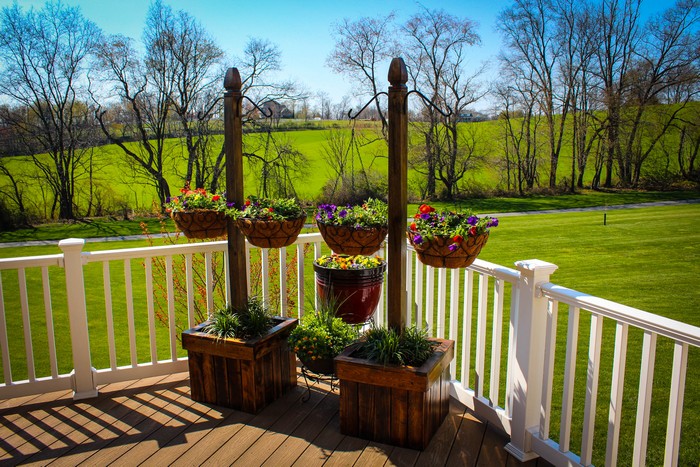Last Updated on October 12, 2022 by teamobn

A hanging basket planter? Well, if your outdoor area is looking a bit lacklustre, adding some seasonal flowers is a great way to brighten things up! Planters and hanging baskets are an easy way to display vibrant blooms, and they can really help to bring your space to life.
Plus, changing out your flowers regularly is a great way to keep your outdoor area looking fresh and inviting. So if you’re looking for a quick and easy way to add some colour and life to your yard or patio, consider adding some seasonal flowers to a hanging basket planter.

Hanging baskets are a great way to add some extra greenery to your home, but they can be quite expensive to buy from stores. If you’re looking to save some money, why not build your own hanging basket? It’s easy to do and will only cost a fraction of the price of a store-bought one. Plus, you can customize it to match your home’s decor.
You can simply place your hanging basket column in the ground, but putting it in a planter is an even better idea if you love redesigning your outdoor area from time to time! You can also plant around the base of the column. And since it’s in a planter, you can easily move it around.
You can design it any way you like or colour it with your favourite paint or wood stain. Plant some colourful flowers like petunias, and wait until they grow and drape over the sides of the hanging baskets
This DIY project teaches you how to build your own hanging basket column with a planter.
Contents
Do you need this hanging basket planter for your deck or patio?
Click on any image to start the lightbox display. Use your Esc key to close the lightbox. ![]()
Materials:
- Pressure Treated Timber 4x4x6-inch – 1 piece each planter for the post
- Pressure Treated Wood 14x14x3/4-inch – 1 piece for the base of the post
- Wooden End Cap
- Hangers – 2 pcs
- Wood Screws
- Pallet Planter Box
Tools:
- Table Saw
- Sander
- Cordless drill
- Tape measure
- Pencil
Steps to build a hanging basket planter:
The first thing to do is to build the column with your 4x4x6-inch pressured-treated timber. If you were able to purchase a smooth and clean one, then you can proceed to the next step. However, if your timber is rough and not clean enough for the project, you may need to sand it to give your post a smooth surface. This will help you achieve a professional looking finish.
To attach the hangers, first use a drill to make pilot holes in the 2 opposite sides of the post. Then insert the wood screws and tighten them until they’re snug. This will ensure that the hangers are securely in place, even when loaded with hanging baskets.
Make sure that the hangers are evenly spaced on the post, so that the baskets will be balanced when hung. You may want to mark the placement of the hangers with a pencil before drilling the pilot holes. Once the hangers are in place, you’re ready to hang your baskets!
After you have attached your hangers to your posts, you can proceed to attaching the wooden end caps. You can do this by gluing them together or using small nails or screws. If you are using screws, make sure to countersink the heads so they are flush with the wood. This will give your fence a clean, finished look.
Next, you will need to attach the column to the base of the hanging basket planter. It is important to make sure that the post is attached to the centre of the post, in order to avoid it tipping over.
Then put your column into the pallet planter box and fill the box with soil. Finally, you cna now plant your seasonal flowers. 🙂 Enjoy!












You can get step-by-step instructions from mtairymd over here…








